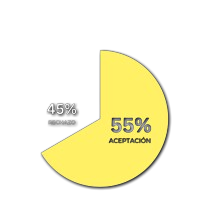Líneas de Investigación sobre Desigualdades de Género en Empresas: Análisis Sistemático y Bibliométrico
DOI:
https://doi.org/10.59282/reincisol.V3(6)1871-1887Palabras clave:
Desigualdades de género, Entorno empresarial, Líneas de investigación, Análisis sistemático, Bibliometría.Resumen
Este estudio tiene como objetivo identificar las principales líneas de investigación sobre las desigualdades de género en el entorno empresarial mediante un análisis sistemático y bibliométrico. A partir de una búsqueda exhaustiva en bases de datos como Scopus, Science Direct y Emerald Insight, se seleccionaron 282 estudios relevantes. Utilizando técnicas de clustering como K-Means y análisis jerárquico, se identificaron tres clústeres clave: Igualdad de Género y Gobernanza Corporativa, Diversidad Estratégica y Toma de Decisiones, y Efectividad Organizacional y Sensibilidad de Género. Se proponen cinco líneas de investigación principales. Primero, se debe investigar cómo la representación de género en las juntas directivas corporativas influye en la toma de decisiones y el desempeño organizacional. Segundo, explorar el impacto de la diversidad de género en la formulación y ejecución de estrategias dentro de las organizaciones. Tercero, analizar cómo la sensibilidad de género en la gestión puede mejorar la cohesión del equipo, la innovación y la efectividad organizacional. Adicionalmente, se identificaron dos líneas más: cuarto, evaluar cómo las políticas de igualdad de género en el lugar de trabajo afectan la moral de los empleados y la retención de talento, y quinto, investigar cómo las organizaciones pueden desarrollar enfoques estratégicos específicos para mejorar la diversidad en todos los niveles, desde la contratación hasta la alta dirección. Estas líneas de investigación proporcionan una base sólida para futuras investigaciones y el desarrollo de políticas empresariales que promuevan la equidad de género, contribuyendo a un entorno laboral más inclusivo y efectivo.
Descargas
Métricas
Citas
Agarwal U., et al. (2023). ASSESSING GLASS CEILING AND GENDER INEQUALITY FOR WOMEN EMPLOYEE IN SERVICE SECTOR. Sachetas.
Arévalo. M., et al. (2023). Gestión empresarial y prácticas de equidad e igualdad de género: el caso de la empresa Agroforestal Cafetalera Tercer Frente. Región Científica
Blanco-González., et al. (2023). Achieving Legitimacy Through Gender Equality Policies. Sage Journals.
Budlender, D., & Hewitt, G. (2002). Gender budgets make cents_ Understanding gender-responsive budgets. Insitute for Development Studies.
Cuenca-Piqueras., et al. (2023). Approach to theoretical perspectives of “sexual harassment”: review and bibliometric analysis from social sciences. Frontiers in Psycology.
Edacherian, S., Karna, A., Uhlenbruck, K. and Sharma, S. (2024), Women at Multiple Levels of Strategic Leadership: Evidence of Gender Spillovers. Corp Govern Int Rev. https://doi.org/10.1111/corg.12584
Elsman., et al. (2022). Study protocol for developing, piloting and disseminating the PRISMA-COSMIN guideline: a new reporting guideline for systematic reviews of outcome measurement instruments. Syst Rev
Fink, J. (2017). Gender Sidelining and the Problem of Unactionable Discrimination. California Western School of Law .
Fuentes, A. (2022). Review of website: Preferred Reporting Items for Systematic Reviews and Meta-Analyses (PRISMA) PRISMA 2020 Statement. REIPE.
Galloway., et al. (2020). Gender Disparity and Potential Strategies for Improvement in Neurology and Clinical Neurophysiology. Journal of Clinical Neurophysiology, 446-454.
Gramiscelli R., et al. (2023). Mind the wage gap: an empirical analysis of the impact of labour income inequality on economic growth. Review of Keynesian Economics, 10–30.
Hoff & Lee. (2021). The gender pay gap in medicine: A systematic review. Health Care Mangement Review.
Kaplan, A., & Bien, J. (2022). Interactive Exploration of Large Dendrograms with Prototypes. The American Statistician, 77(2), 201–211. https://doi.org/10.1080/00031305.2022.2087734
Lnal-Cavian G. & Sahil S. (2023). The glass ceiling. Dark Sides of Organizational Life.
Mahini, R., Xu, P., Chen, G. et al. Optimal Number of Clusters by Measuring Similarity Among Topographies for Spatio-Temporal ERP Analysis. Brain Topogr 35, 537–557 (2022). https://doi.org/10.1007/s10548-022-00903-2
Noronha & Aithal. (2019). Work Life Balance and Glass Ceiling of Women Employees – A Literature Review. audi Journal of Business and Management Studies, 86-396.
Ouzzani., et al. (2016). Rayyan—a web and mobile app for systematic reviews.
Pochinkova., et al. (2022). Updated brief recommendations onwriting and presenting systematic reviews: what’s new in PRISMA-2020 guidelines? Medicina Marina.
Porzsolt., et al. (2019). Inclusion and exclusion criteria and the problem of describing homogeneity of study populations in clinical trials. BMJ Journal.
Seunghyun Oh, T. J. Lah (2024), An empirical Analysis on the Operational Effectiveness of the Police Public Officials Council: Focusing on Organizational Fairness Gender Sensitivity Discretion on Job Satisfaction.
Valizadeh., et al. (2022). Abstract screening using the automated tool Rayyan: results of effectiveness in three diagnostic test accuracy systematic reviews. BMC Medical Research Methodology.
World Bank. (2019). Women, Business and the Law: A Decade of Reform. Washington DC.: World Bank Group.
Yavorsky, J. E. (2019). Uneven Patterns of Inequality: An Audit Analysis of Hiring-Related Practices by Gendered and Classed Contexts . Social Forces, 461–492.
Publicado
Cómo citar
Número
Sección
Licencia
Derechos de autor 2024 Raquel Vera Ortega, Yomar González Cañizalez

Esta obra está bajo una licencia internacional Creative Commons Atribución-NoComercial-CompartirIgual 4.0.

























